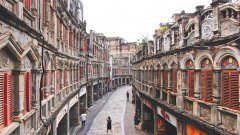Feature: Miro art exhibition launched in Lisbon
LISBON, Sept. 30 (Xinhua) -- An exhibition featuring more than 80 of Spanish artist Joan Miro's paintings, which belong to the Portuguese government, is being inaugurated this Friday at the country's Serralves museum.
"This exhibition shows Miro in a very different way, allowing a creation of dialogue between means," Robert Lubar Messeri, curator of the exhibition and a leading world expert in Miro's work, told journalists at an exclusive visit for media on Friday.
"He was not an artist that wanted you to look at his work, he is an artist that exhorts you to touch. Textile sensation is an important part of his work. He was grounded in physical experience," he said.
Lubar Messeri explained he did not want the exhibition to show the artist's work chronologically, but rather to create exchanges between time periods and materials.
The exhibition, entitled "Joan Miro: Materiality and Metamorphosis," spans six decades of the Spanish artist's works, from 1924 to 1981.
It focuses on the evolution of the artist's pictorial language, in the fields of design, painting, collage and tapestry.
While Miro, who was born in Barcelona in 1893, began painting still-lives, he gradually moved away from realism and endorsed contemporary influences including Surrealism, Fauvism and Cubism.
His style cannot be easily defined, having experimented with different styles and mediums during his entire career and having worked with different materials.
Walking through one of the gallery rooms, Lubar Messeri pointed out that many of the materials used were signs of destruction and aggression. He also subjected humans to deformations, expressing his discontent while in exile in Paris due to the civil war in Spain and world events.
The Portuguese government recently decided to keep the collection of 85 paintings by Miro following a controversial move to sell the paintings to London's Christie's gallery in 2014.
Political opponents and activists managed to cancel the debt-laden country's plans to raise money through the auction, and the government finally decided to keep the paintings in the city of Porto, north of Portugal.
The government was expecting to raise at least 50 million dollars through the sale.
Lubar Messeri said: "It was a political decision. When you sell your cultural heritage you sell your future."
He said he expects the exhibition will attract visitors around the world.
The exhibition at Serralves runs until January 2017.















